|
   |
|
Page 3 |
Newsletter 132 Spring 2021 © Hampshire Mills Group |
|
Lumsdale Valley Mills
Ruth
Andrews
Photos by Keith and Ruth Andrews, taken in 2017 and
2020
|
|
I
have had some information for this article since
Keith and I visited it in 2017, but I have only just
found out enough to write about the whole area. Lumsdale
is a fascinating example of how a fairly
insignificant stream tumbling down a rocky valley
near Matlock became arguably one of the ‘best’
water-powered industrial sites in England.
|
|
It
provided power for a sawmill, corn milling, fulling,
lead smelting, bone grinding, grinding minerals for
paints, cotton spinning, and most recently
bleaching, through a complicated series of
watercourses, leats, culverts, and so on which used
water from Bentley Brook.
The
mills and ponds in the Lumsdale Valley are in
a listed conservation area. The Arkwright Society
owns the upper part of the valley and the site was
scheduled as an ancient monument by Historic England
in 2014. The upper part is only accessible on foot
and seems to mostly attract photographers drawn to
the wild waterfalls and tumbled vegetation-covered
ruins. Bentley Brook, the power source for all the
mills, rises on Matlock Moor and has never been
known to dry up.
Starting at the top of the site, a water-powered
lead smelter may have been in operation as early as
the 16th century. When the lead industry declined
this oldest building became a bone mill, used
to grind bones for use in making pottery and
fertilisers; its site is now lost in the
undergrowth, along with that of the 1780s upper
pond, whose dam collapsed in 1947. This pond
was built to provide power for an early
cotton-spinning mill (Gartons Mill) lower down the
valley.
|
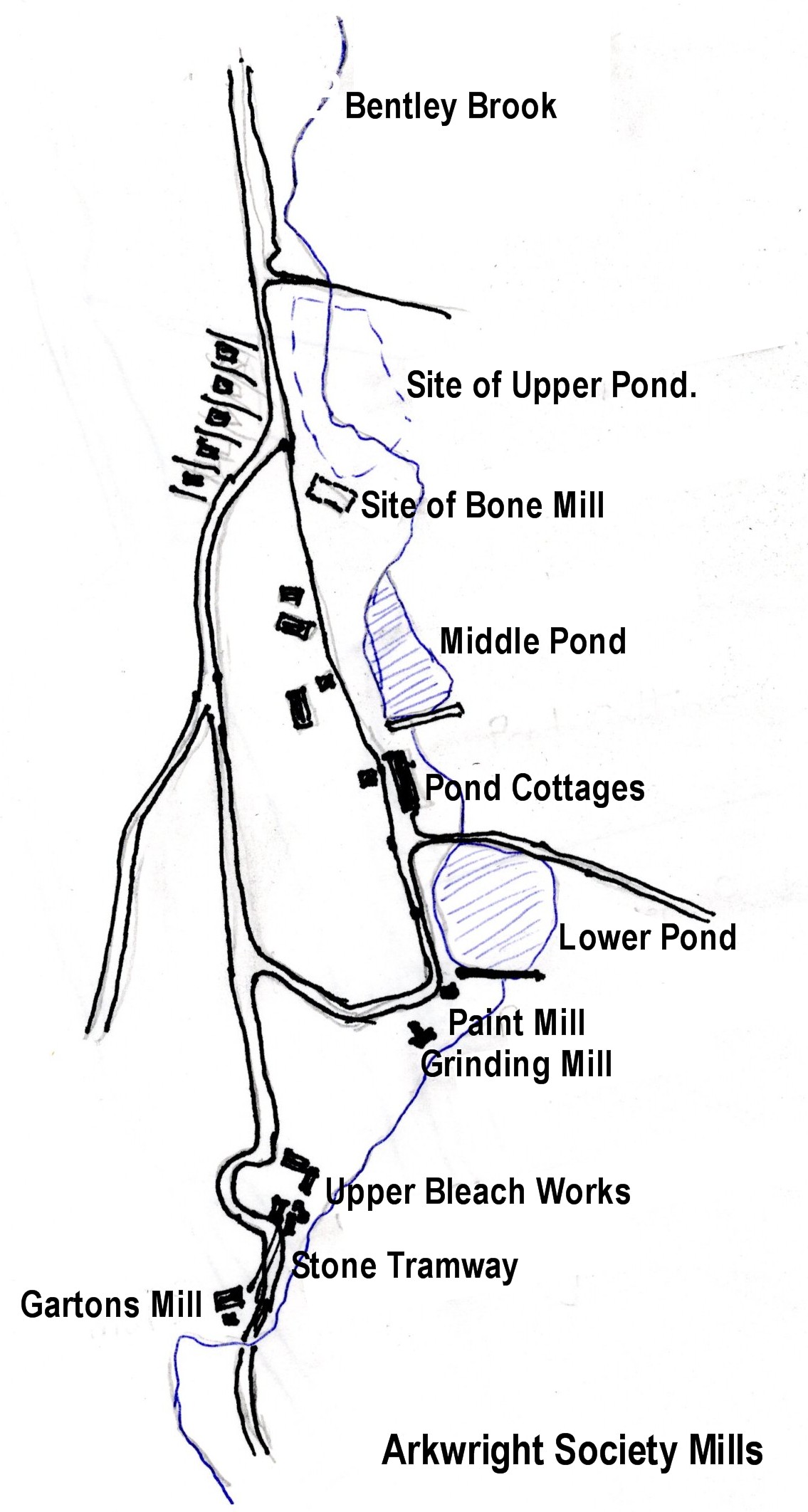 |
|
A
short distance downhill is the middle pond
(right) which was also constructed in the 1780s to
provide power for Gartons Mill. It had become
completely silted up and was restored by the
Arkwright Society in 2014 with a grant from the HLF.
|
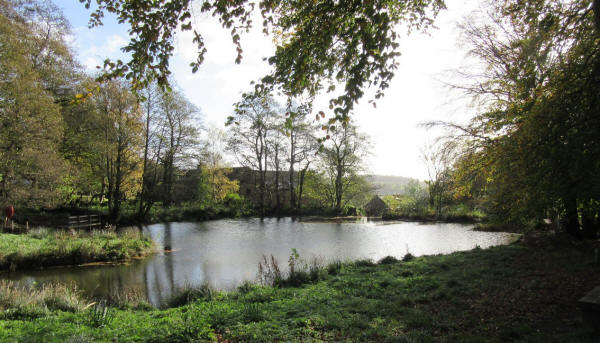
|
|
Below its weir, Pond
Cottages (below left) occupy the site of two
lead smelting cupolas built in 1749. Buildings on
the opposite side of the lane were a counting
house (below right) and ore house. Lead smelting
finished in the 1780s and the buildings were later
converted to workers cottages for the mills further
down the valley..
|
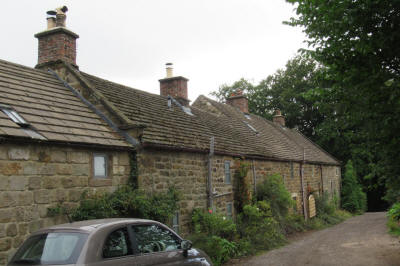 |
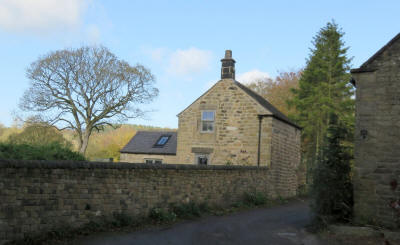 |
|
Lower Pond was the site of a quarry until the
1850s when it was converted into a reservoir,
contained by a large stone dam (below left)
which overlooks the steep and intensively built-on
part of the site. Here can be found the paint
mill, which is one of the earliest structures in
the valley, and probably dates from the 1600s when
it was also a lead smelting mill. It later became a
bleaching mill and finally a mill grinding barytes
for the paint industry. There is a single French
burr stone lying abandoned outside the ruined
walls and a beautifully carved circular stone
trough (below right) for bleaching hanks of
yarn.
|
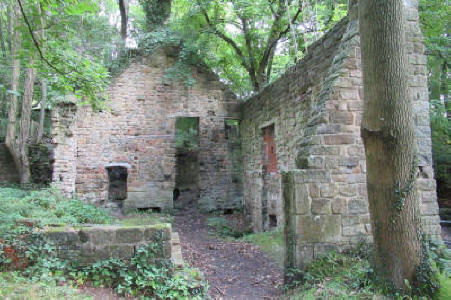
Paint Mill
|
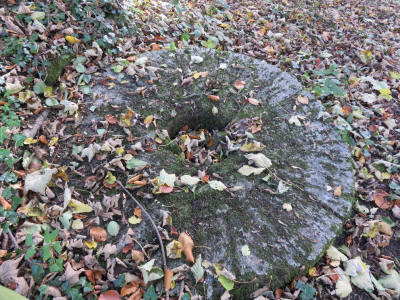
French Burr stone
|
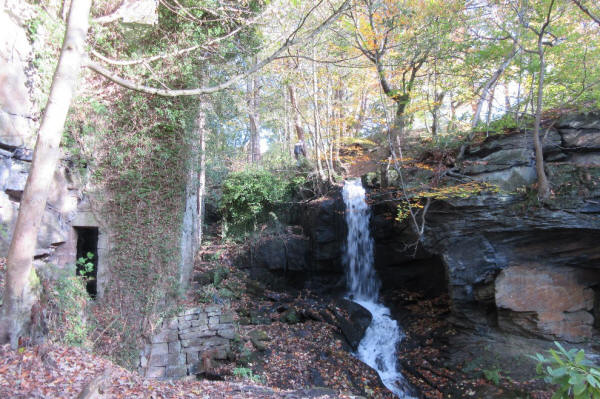 |
It
is hard to separate the ruins of the paint mill from
those of the grinding mill (left), built into
the rock beside a natural waterfall around 1770,
probably as a corn mill, but it also ground red
lead! It has a spectacular wheel pit (below)
which once housed an immense wheel fed by a cast
iron pipe.
|
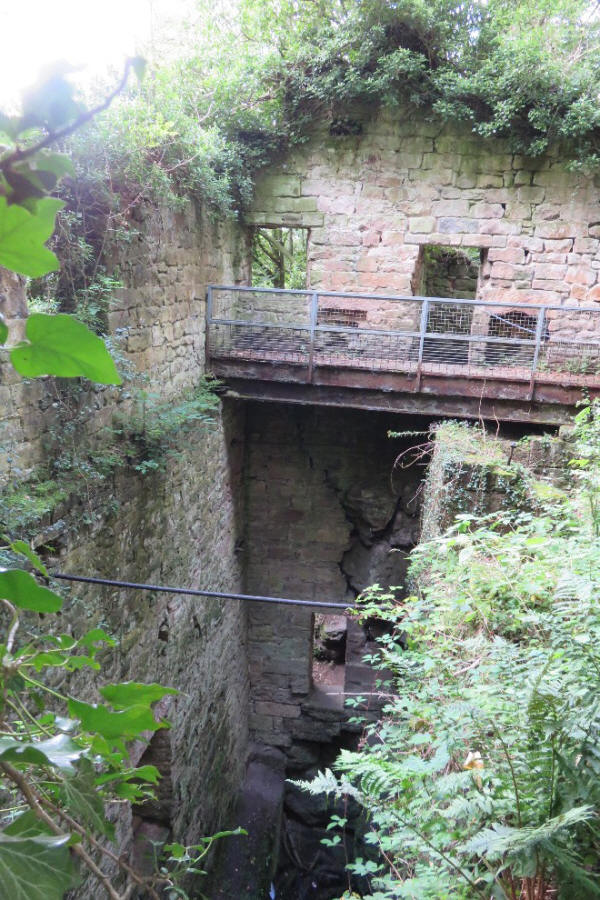 |
|
Below these rocky ruins the valley becomes steeper
before opening out into flatter land in the valley
bottom.
As
those who have visited the Cromford Mill World
Heritage Site may remember, Richard Arkwright helped
to trigger the mechanisation of cotton spinning when
he invented his famous ‘water frame’. He had the
foresight to patent it. The patent was due to run
out in 1775 so Watts Lowe & Co anticipated this and
built a 3-storey cotton-spinning mill, Gartons
Mill, to take advantage of the newly available
technology. It was they who constructed the upper
and middle ponds to provide a constant water
supply. Two storeys of this first mill have
survived and their construction is very much like
that of the slightly newer mills lower down the
valley.
|
After Watts Lowe & Co went bankrupt in 1813 John
Garton bought the land in the valley and converted
the spinning mill to a bleach works, which became
known as the Lower Bleach Works (right). It
was connected to the Upper Bleach Works
(below) by a stone tramway which hauled
wagons of wet yarn to a drying floor.
Flues led to a large stone chimney opposite
the lower pond. This part of the site is not
currently accessible, and as you can see from the
photo of Upper Bleach Works it is not in a safe
condition
|
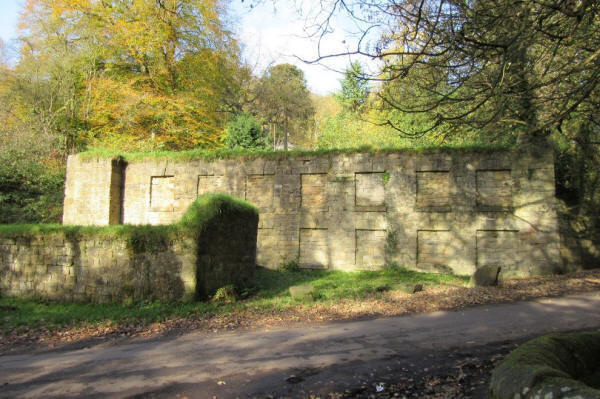 |
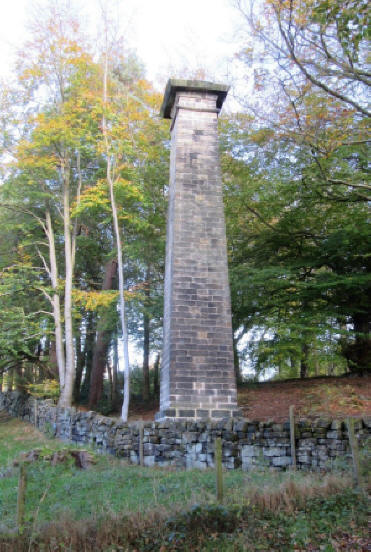 |
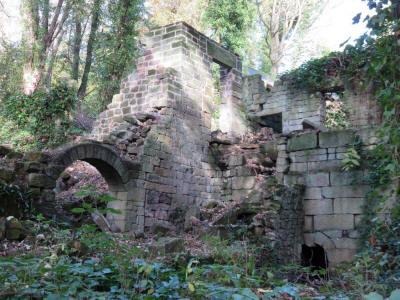
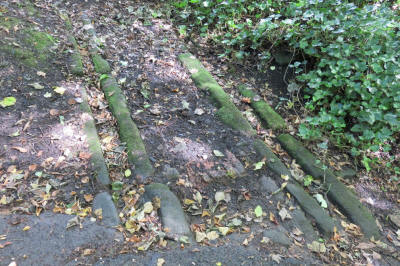
|
|
Further down the valley and outside the ancient
monument site (see sketch map on next page) is
Farnsworth’s Bleachworks (right), established in
1792. The walls of the standing buildings and
retaining walls which line the lane date from the
1900s. The main building, with its gable frontage
and central oculus (round window) was a bleaching
croft.
|
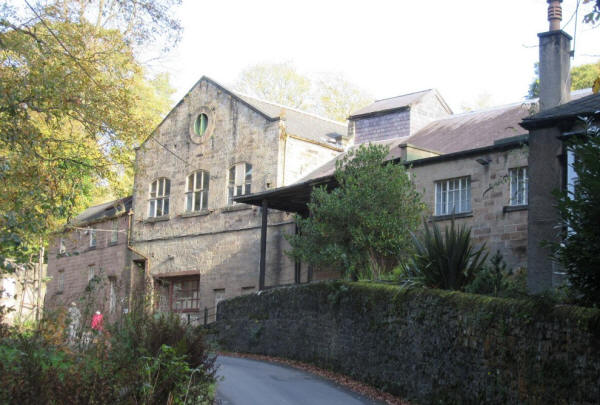 |
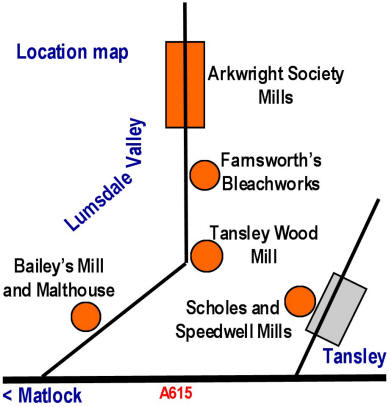 |
This sketch map shows the locations of mills in the
lower valley and in Tansley, all of which date from
the late 1700s, unlike the much older ruined mills
in the upper valley.
|
|
The
next mill down the valley is Tansley Wood Mill
(see below). The oldest buildings date from
1783, and were used for spinning candlewick yarn
from flax waste. The mill was enlarged in 1794 and
the early 19th century, when the square-based
chimney in the mill yard was added, but the whole
site is now derelict. It had an external 7.5m
diameter breastshot waterwheel which was replaced by
a 10m suspension wheel, and then a turbine, plus
steam and gas engines and electricity. It became
the most extensive group of buildings in the valley.
Permission for conversion to residential use was
granted in 2016, and in 2017 it appeared to be being
cleared out, but it looked exactly the same in 2020
when we visited it again, right down to the same
pile of rubbish in the yard.
|
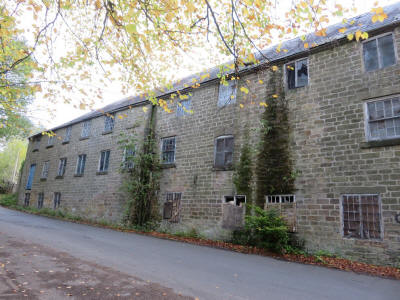 |
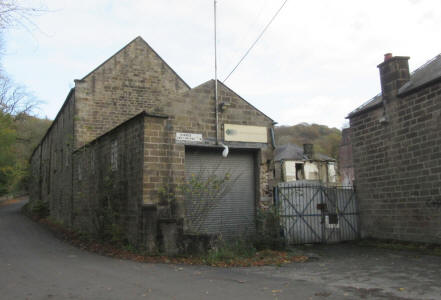 |
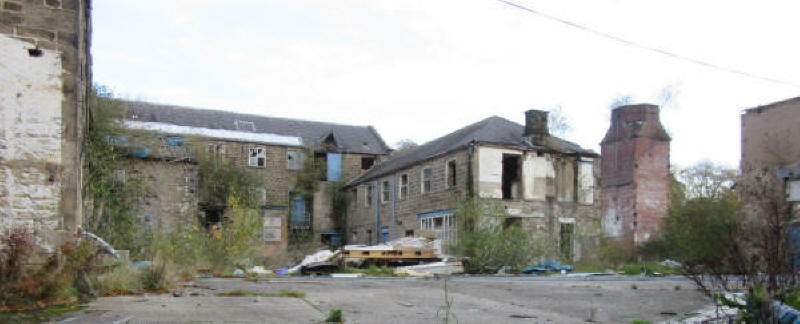
In contrast,
Bailey’s Mill, also known as Matlock Green
Corn Mill (below), has been converted for
residential use. Formerly Gartons & E H Bailey Ltd,
it was built for Samuel Unwin in 1799. It is also
on the Bentley Brook and had a central internal
waterwheel. The building was greatly enlarged when
a steam engine was added in the late 19th century
and roller milling was introduced at about the same
time.
|
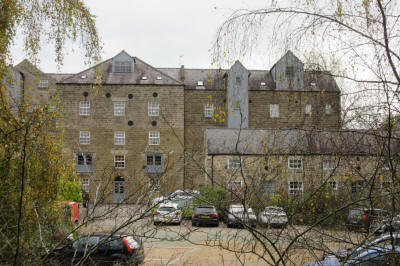 |
 |
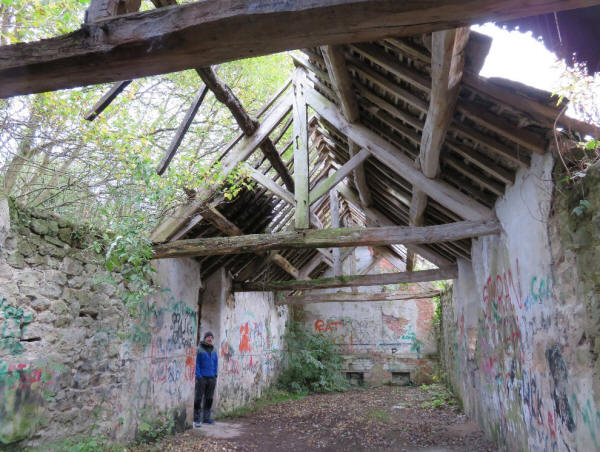 |
It
was probably lack of competition and the relative
isolation of Bailey’s Mill which led to the
expansion of the complex in the 18th century to
include a malthouse (left). This grade 2
listed building had holes in its roof when the area
was recorded in 2010, and it was deemed to be a
building at risk. It had bigger holes in 2017 when
we saw it!
Not
in the Lumsdale Valley, but still in the
conservation area in the nearby village of Tansley,
are two more mills built by Samuel Unwin in the late
1700s. They are very similar in appearance to the
original spinning mill on the Bentley Brook, but
both have their own separate ponds. |
|
Scholes Mill (right) was built in 1797 as a
cotton-spinning mill, but was later used for
‘smallware’ – the 19th century name given to narrow
textiles such as tape and bindings made of a variety
of fabrics such as cotton, linen, silk, and wool –
rather than for spinning. It was fed by two large
ponds and like Bailey’s Mill as originally built it
had a central internal waterwheel. The building is
still in use (so I couldn’t get nearer to photograph
it) but none of its internal structures are
original, and although the brick chimney stack
remains the associated steam engine house has been
demolished.
Speedwell Mill (below) of 1783 was half the size
of Scholes Mill, and had a separate pond, an
internal waterwheel on one end of the building, and
a monumental stone arched aqueduct from the pond.
|
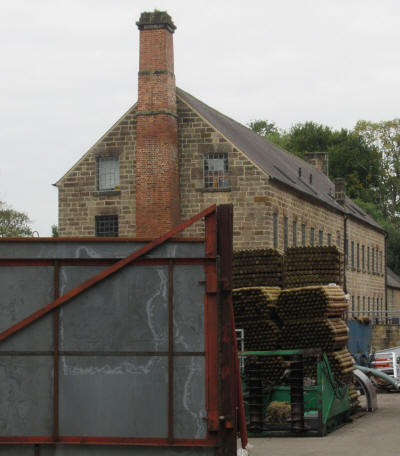 |
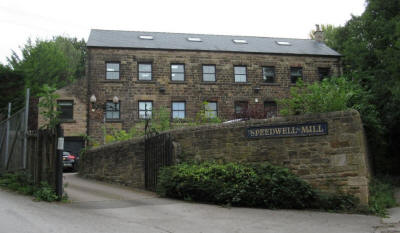 |
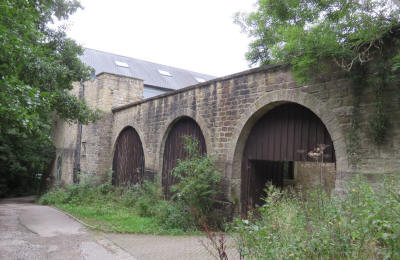 |
Information from the display boards provided by the
Arkwright Society,
Lumsdale Conservation Area Character Appraisal by
Derbyshire Dales District Council,
Historic England, and other sources. |
|
|
|
